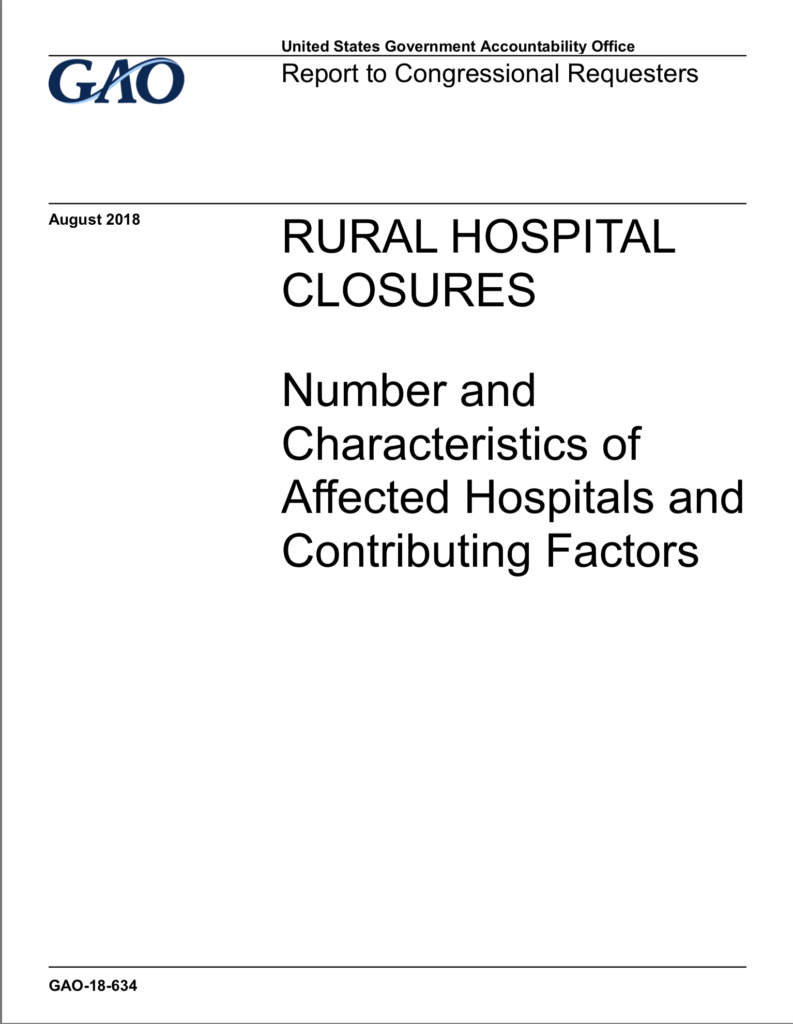The United States Government Accountability Office was asked by Members of Congress to examine Rural Hospital Closures and the Number and Characteristics of Affected Hospitals and Contributing Factors.
Research and policy considerations from the RUPRI Health Panel, the RUPRI Center for Rural Health Policy Analysis and Rural Health Value, in partnership with Stratis Health, were included in the report.
GAO’s analysis of data from HHS and an HHS-funded research center shows that 64 rural hospitals closed from 2013 through 2017. This represents approximately 3 percent of all the rural hospitals in 2013 and more than twice the number of closures of the prior 5-year period. GAO’s analysis further shows that rural hospital closures disproportionately occurred in the South, among for-profit hospitals, and among hospitals that received the Medicare Dependent Hospital payment designation, one of the special Medicare payment designations for rural hospitals.
According to literature GAO reviewed and stakeholders GAO interviewed, rural hospital closures were generally preceded and caused by financial distress. In
particular, rural hospitals that closed typically had negative margins that made it difficult to cover their fixed costs. According to these sources, financial distress
has been exacerbated in recent years by multiple factors, including the decrease in patients seeking inpatient care and across-the-board Medicare payment
reductions. In contrast, according to the literature GAO reviewed and stakeholders GAO interviewed, rural hospitals located in states that increased Medicaid eligibility and enrollment experienced fewer closures.


